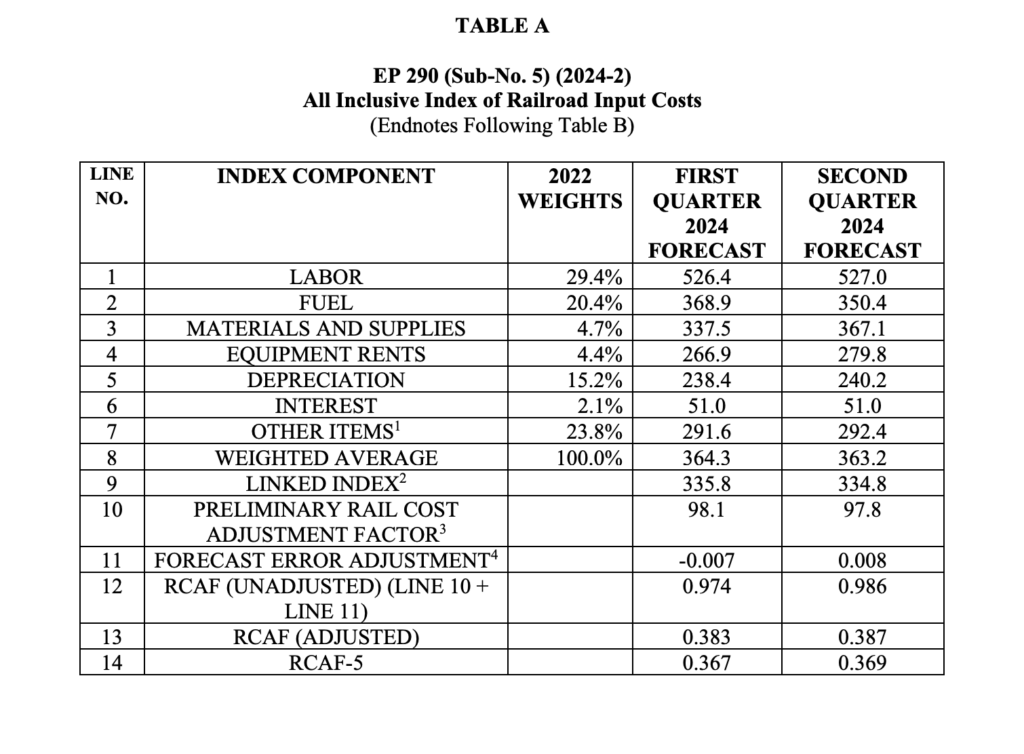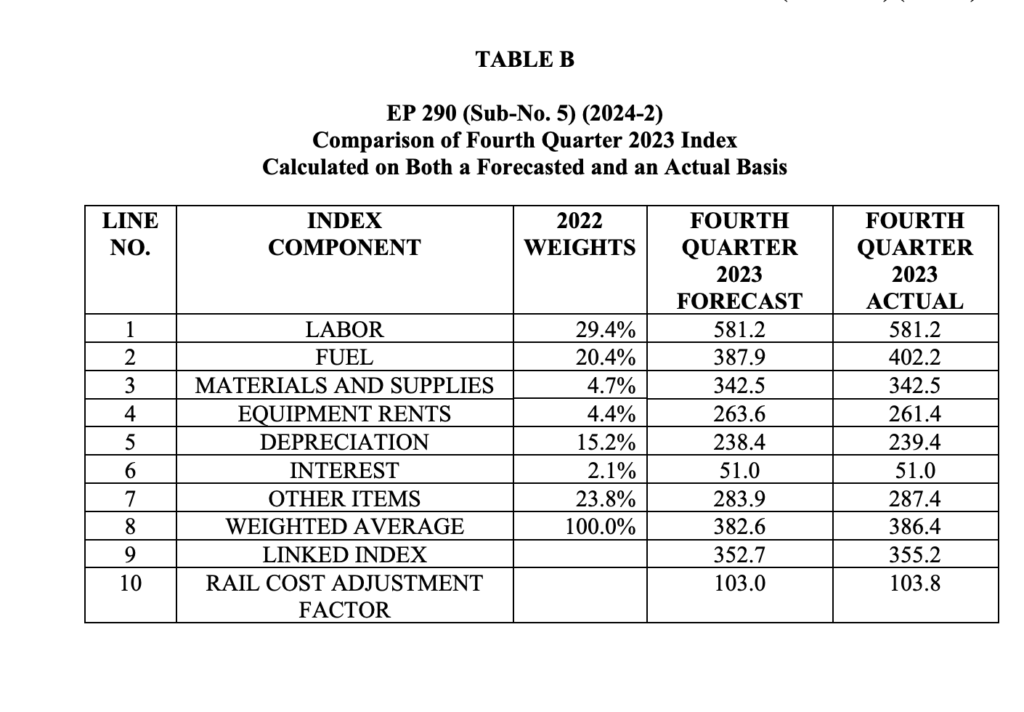
STB: Rail Cost Adjustment Factor Set for 2Q24
Written by Carolina Worrell, Senior Editor
The Surface Transportation Board (STB) has adopted for second-quarter 2024 the rail cost adjustment factor (RCAF), defined as “an index formulated to represent changes in railroad costs incurred by the nation’s largest railroads over a specified period of time.”
STB is required by law to publish the RCAF on at least a quarterly basis. The Association of American Railroads (AAR) each quarter computes three types of RCAF figures and submits them for STB approval:
- Unadjusted RCAF: “an index reflecting cost changes experienced by the railroad industry, without reference to changes in rail productivity.”
- Adjusted RCAF: “an index that reflects national average productivity changes as originally developed and applied by the ICC [Interstate Commerce Commission], the calculation of which is currently based on a five-year moving average.” According to the STB, the five-year moving geometric average of productivity change for U.S. Class I railroads from 2018-2022 is 1.011 (1.1% per year).
- RCAF-5: “an index that also reflects national average productivity changes; however, those productivity changes are calculated as if a five-year moving average had been applied consistently from the productivity adjustment’s inception in 1989.” According to the STB, the RCAF-5 for second-quarter 2024 uses a productivity trend for the years 2017-2021, which is 1.028 (2.8% per year).
The STB on March 20 reported that it had reviewed AAR’s submission (download below) and adopted these figures for second-quarter 2024: unadjusted RCAF, 0.986 (up 1.2% from first-quarter 2024’s 0.974); adjusted RCAF, 0.387 (up 1.0% from first-quarter 2024’s 0.383); and RCAF-5, 0.369 (up 0.5% from first-quarter 2024’s 0.367).
Table A shows the index of railroad input costs, Unadjusted RCAF, Adjusted RCAF, and RCAF-5 for first-quarter 2024 and second-quarter 2024:

Table B shows the fourth-quarter 2023 index and the RCAF calculated on both an actual and a forecasted basis. The difference between the actual calculation and the forecasted calculation is the forecast error adjustment:




